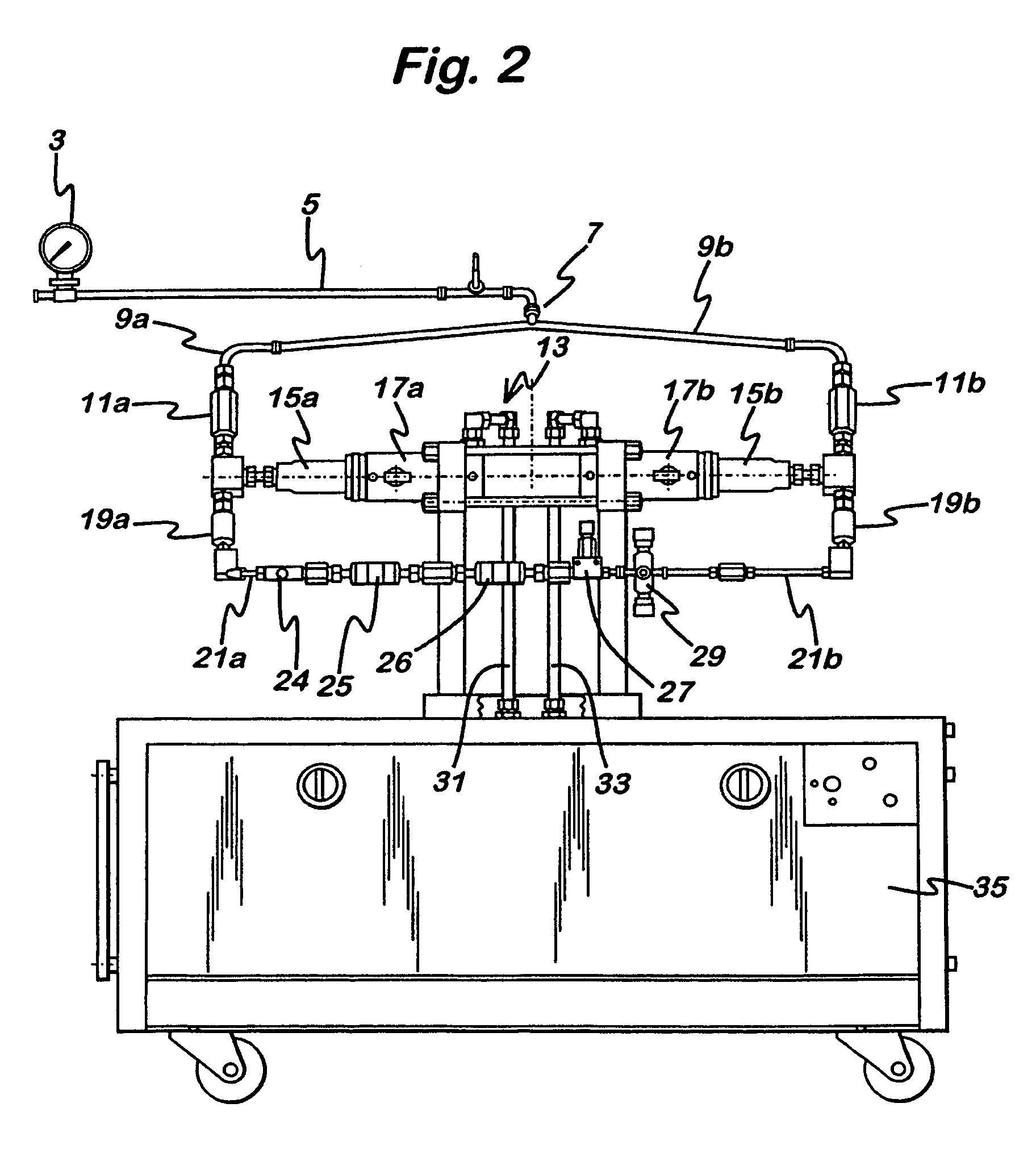Particle-size reduction apparatus, and use thereof
a technology of particle size reduction and reduction apparatus, which is applied in the direction of solid separation, powder delivery, agriculture, etc., can solve the problems of impaired or abolished efficacy of the resulting product, particular problems in the sterilisation of suspensions, and inability to sterilise known alternative methods for pharmaceuticals
- Summary
- Abstract
- Description
- Claims
- Application Information
AI Technical Summary
Benefits of technology
Problems solved by technology
Method used
Image
Examples
example 1
Sterilising a Particle-Size Reduction Apparatus
[0143]Protocol
[0144]The sterilisation protocol of the invention has been developed for a known particle size reduction apparatus, namely a Microfluidics standard MF-210C Microfluidizer(®), as part of a manufacturing process to provide sterile Budesonide suspensions for Blow-Fill-Seal production of nebulisation suspensions. The protocol is nevertheless believed to be of application to suspensions of other drugs and also to particle-size reduction using other equipment.
[0145]As an initial step, we demonstrated the ability to inactivate high levels of contamination of an isolated intensifier and check valves, and the following protocol was then developed for sterilisation of the whole apparatus, to ensure that sterilising temperatures can be achieved throughout the product contact areas and in the isolation chambers of the intensifier.
[0146]The protocol is designed to provide the temperatures and exposure times required to achieve a minimu...
example 2
Validating Sterility of a Seal
[0172]A seal, which has previously been contaminated with at least 1×106 heat-resistant bacterial spores, is inserted into the bore of a particle-size reduction apparatus. The particle-size reduction apparatus is sterilised as described in Example 1 above and then the seal is removed from the apparatus. To validate the sterility of the apparatus bore, the seal is incubated with growth medium. A seal removed from an apparatus that has not undergone a sterilisation procedure is used as a control. The growth medium is examined for growth of microorganisms, which would indicate that the test seal (and hence the bore) had not been sterilised effectively. If there is no growth in the medium comprising the test seal, (growth being observed in the medium comprising the seal from the unsterilised bore) this indicates that sterility is achieved.
example 3
Reduction of Particle Size of a Sterile Suspension
[0173]The mass median diameter of particles of a Budesonide suspension is reduced using an M-210EH Microfluidizer(®) apparatus containing, a first interaction chamber having a single circular flow passage of approximately 400 μm diameter and a second interaction chamber having a single circular flow passage of approximately 300 μm; that has previously been sterilised according to Example 1 above.
[0174]A sterile Budesonide suspension (12 litres), having particles of mass median diameter approximately 50 μm is introduced into the sterile apparatus from the reaction feed tank. The pressure used is approximately 34 MPa (5,000 psi) and the apparatus is run at 0.75 litres per minute. The suspension is passed through the apparatus and particle size is monitored during each pass. After about 30 passes the mass median diameter of particles in the suspension is reduced to 2-3 μm. The suspension is then transferred to a sterile packaging line f...
PUM
| Property | Measurement | Unit |
|---|---|---|
| area | aaaaa | aaaaa |
| pressure | aaaaa | aaaaa |
| pressure | aaaaa | aaaaa |
Abstract
Description
Claims
Application Information
 Login to View More
Login to View More - R&D
- Intellectual Property
- Life Sciences
- Materials
- Tech Scout
- Unparalleled Data Quality
- Higher Quality Content
- 60% Fewer Hallucinations
Browse by: Latest US Patents, China's latest patents, Technical Efficacy Thesaurus, Application Domain, Technology Topic, Popular Technical Reports.
© 2025 PatSnap. All rights reserved.Legal|Privacy policy|Modern Slavery Act Transparency Statement|Sitemap|About US| Contact US: help@patsnap.com



